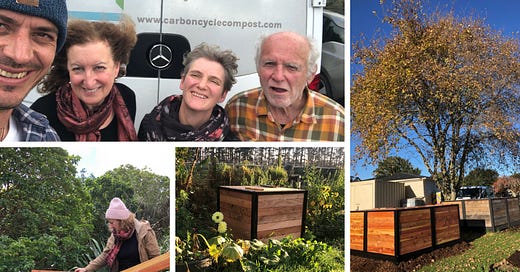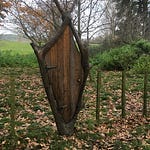The week of 16-20 June has been busy with ‘The Flower Project’ here in my local community - here’s what I learned.
The first session was a very low pressure run-through, I myself wasn’t sure how I would set this up for small group learning, so this was just a test. Plus, it was an opportunity to show the material to one of my trip sponsors - Carbon Cycle Compost Ltd.
There were five people there, all of whom I know really well, and it was lovely to hear their honest feedback: that if I had fresh flowers, then people would get a better sense of the qualities of each plant, and if each workshop participant had their own little plastic container to make their own blend, then they would have something to take home.
Off to do some shopping!
Super interesting was that the odour reduction qualities of this method may be most useful for the people in an organisation who aren’t necessarily making compost, but whose work is affected by any odours.The second composting workshop was not on the Maye Bruce method, but I took everything along to demonstrate this as the latest trend in compost education - I had the vase of flowers to touch & smell, and also had a little container for the single participant to take home.
There’s definitely a sense of ‘how am I going to actually use this?’ that is present when someone is taking the blend home, it’s a different quality of question to ‘how might I use this?’ or ‘why would I consider using this?’.
The request from this second workshop was more information on the plants as compost activators on their own - what makes these plants so special?Third reflection of the week was a great question from someone who downloaded the how-to guide from the Ko-Fi shop (you. can get that here), and she wanted more guidance on how to grow each of the six plants. (The guide assumes you have access to the six ‘biodynamic’ plants: yarrow, chamomile, stinging nettle, dandelion, valerian, oak)
Listen to the recording to hear my tips for growing yarrow, chamomile, stinging nettle, dandelion, valerian, and how to find a grand old oak in your neighbourhood.















Share this post